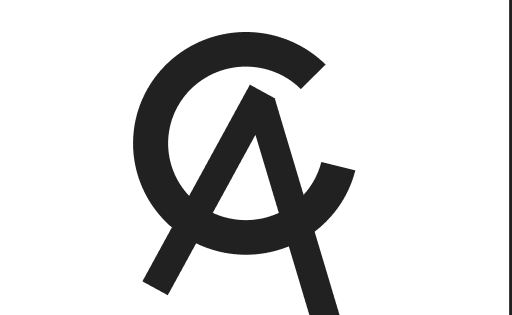Kraken Weighs Delisting Tether Amid New EU Regulations
As the cryptocurrency industry continues to evolve, regulatory frameworks are becoming increasingly stringent. A significant development in this area is the European Union’s Markets in Crypto-Assets (MiCA) regulations, which are set to impose stricter rules on crypto trading, particularly affecting stablecoins like Tether’s USDT. One of the prominent crypto exchanges, Kraken, is considering delisting Tether (USDT) from its EU platform to comply with these upcoming regulations. This potential move highlights the broader implications of MiCA on the crypto market and the strategic adjustments exchanges are making in response.
Table of Contents
Kraken’s Consideration and Regulatory Strategy
In a recent interview, Marcus Hughes, Kraken’s global head of regulatory strategy, discussed the exchange’s cautious approach toward MiCA regulations. He emphasized that Kraken is preparing for various scenarios, including the possibility of delisting specific tokens such as USDT. Hughes mentioned, “We’re planning for all eventualities, including situations where it’s just not tenable to list specific tokens such as USDT. It’s something that we’re actively reviewing, and as the position becomes clearer, we can take firm decisions on that.”
Kraken is not alone in its cautious approach. The exchange is closely monitoring the regulatory environment to ensure compliance and maintain its operations within the EU. The potential delisting of USDT would be a significant move, considering Tether’s role as the largest stablecoin in the market.
Tether’s Response and Regulatory Concerns
In response to Kraken’s considerations, Tether has emphasized the importance of maintaining Euro liquidity for European customers while keeping USDT as a viable transaction gateway. Paolo Ardoino, Tether’s CEO, expressed concerns about certain MiCA requirements, particularly those related to reserve management. Ardoino stated that Tether will continue engaging with regulators but does not intend to be regulated under MiCA in the medium term.
The MiCA regulations aim to establish a licensing system for stablecoin issuers and impose stricter corporate governance and reserve management requirements. These rules are designed to enhance financial stability and consumer protection but pose significant challenges for stablecoin issuers like Tether.
Impact of MiCA on Stablecoins
Under MiCA, many stablecoins currently available in the EU will likely face delisting or significant operational changes. Hughes noted, “It’s an evolving picture. What we’re clear on is that the scope of the type and number of stablecoins that are offered today in Europe are unlikely to be able to be offered going forward. At some point in the future, there’ll be a cut-off at which that won’t be possible. A lot of that will depend on which assets are being properly registered within the European Union under the e-money regime.”
This regulatory shift is expected to impact not only Tether but also other stablecoins and crypto exchanges operating within the EU. OKX, another major crypto exchange, has already limited USDT functionality in the EU earlier this year, citing regulatory uncertainties.
Kraken’s Commitment to Compliance
Despite the regulatory challenges, Kraken has reiterated its commitment to compliance and operational excellence. Following the initial publication of these considerations, Kraken provided a statement emphasizing that there are no current plans to delist Tether or alter USDT trading pairs. A spokesperson for Kraken said, “As a leading crypto exchange, we are constantly evaluating our global strategy and operations to ensure that we remain compliant both now and in the future. We are committed to following the rules as we continue our mission of accelerating the adoption of this asset class.”
Kraken’s approach highlights the delicate balance exchanges must strike between regulatory compliance and maintaining market competitiveness. The exchange’s ongoing evaluation of its global strategy underscores its proactive stance in adapting to regulatory changes.
The Role of the European Banking Authority (EBA)
The European Banking Authority (EBA) plays a crucial role in finalizing the technical standards for MiCA. As the EBA finalizes these standards, exchanges like Kraken are preparing for a future where the current range of stablecoins may not be sustainable in Europe. The EBA has urged stablecoin issuers to follow “guiding principles” to operate in Europe, but the finalized guidelines will ultimately determine the regulatory landscape.
Kraken and Tether’s Regulatory Dialogue
Tether has been actively engaging in discussions with European regulators about the proposed MiCA rules. Paolo Ardoino highlighted the need for stablecoins to maintain 100% reserves in treasury bills to avoid bank failures. This precautionary measure is aimed at ensuring the stability and security of stablecoins, particularly in light of past financial crises such as the collapse of Silicon Valley Bank.
Ardoino commented, “Stablecoins should be able to keep 100% of reserves in treasury bills, rather than exposing themselves to bank failures keeping a big chunk of reserves in uninsured cash deposits. We hope to continue the dialogue with EU regulators to address those concerns.”
Potential Outcomes for Kraken and USDT
As Kraken navigates the evolving regulatory landscape, the potential outcomes for USDT on its platform remain uncertain. The exchange is committed to ensuring compliance with MiCA while exploring the best ways to serve its European customers. This strategic approach involves continuous assessment of the regulatory environment and proactive engagement with regulatory authorities.
Conclusion
The potential delisting of Tether (USDT) from Kraken’s EU platform underscores the significant impact of the upcoming MiCA regulations on the cryptocurrency market. As exchanges like Kraken and stablecoin issuers like Tether navigate these regulatory changes, their strategies and decisions will shape the future of crypto trading in Europe. Kraken’s commitment to compliance, coupled with Tether’s ongoing dialogue with regulators, highlights the industry’s adaptive efforts to align with evolving regulatory frameworks. The outcome of these efforts will be crucial in determining the stability and sustainability of stablecoins in the European Union.



